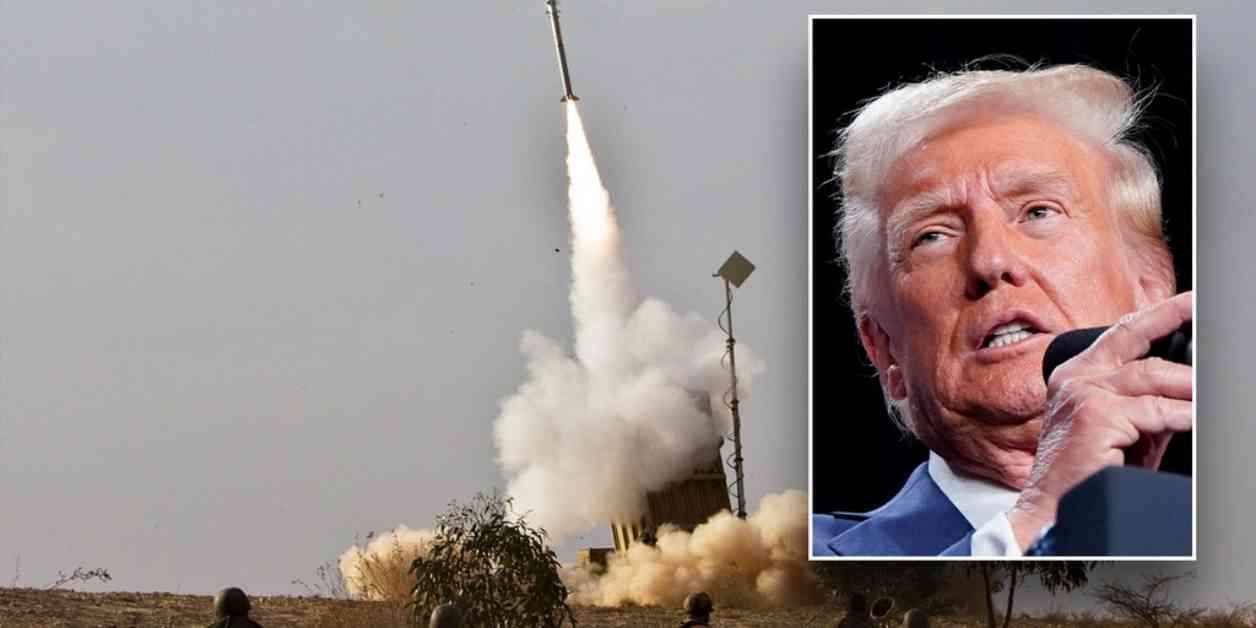President Trump’s executive order, dubbed “The Iron Dome for America,” has sparked discussions about revamping the United States’ missile defense capabilities. The president has emphasized the urgent need to address what he considers to be the most significant threat to the nation’s security. However, the path to implementing a system akin to Israel’s renowned Iron Dome poses unique challenges due to the diverse nature of threats facing America today.
During the Cold War era, the U.S. and the Soviet Union navigated the looming threat of nuclear war through the doctrine of “Mutual Assured Destruction.” This strategy relied on the fear of catastrophic retaliation to deter both sides from launching nuclear attacks. Fast forward to the present day, the landscape of threats has evolved considerably. The U.S. now faces adversaries like Russia, China, North Korea, and Iran, armed with advanced missile systems capable of reaching American shores. Additionally, the emergence of terrorist groups with access to sophisticated technologies further complicates the defensive scenario.
Unlike Israel, which successfully deployed a three-tiered air defense network encompassing systems like the Iron Dome, David’s Sling, and Arrow 3, the United States faces unique challenges. The vast expanse of the country, coupled with the potential sources of threats from multiple directions, presents a complex puzzle for defense planners. While the Israeli model proved effective in thwarting attacks in 2024, replicating it on a larger scale in the U.S. poses logistical and financial challenges.
The U.S. possesses a diverse array of air defense systems, ranging from anti-ICBM systems to sea-based interceptors and ground-based missile defense platforms. However, the lack of a cohesive, integrated network akin to Israel’s poses a critical gap in the nation’s defense architecture. President Trump’s call for a comprehensive missile defense shield demands a strategic realignment of existing capabilities, doctrine, and defense strategy to effectively counter the evolving threats.
Drawing parallels to President Reagan’s Strategic Defense Initiative, commonly known as “Star Wars,” Trump’s proposal aims to fortify America against aerial threats. While Reagan’s ambitious initiative ultimately fell short of its goal to render nuclear weapons obsolete, Trump’s pragmatic approach to establish an American version of the Iron Dome presents a more achievable objective. In a landscape teeming with aerial threats, the imperative of enhancing national security through a robust missile defense system cannot be overstated.
As the Pentagon embarks on the monumental task of fulfilling the executive order, the critical imperative lies in identifying the optimal mix of air defense platforms, devising a coherent doctrine, and formulating a comprehensive defense strategy. By prioritizing key domestic sites, assessing specific threats, and aligning capabilities accordingly, the U.S. aims to establish a formidable defense shield against a spectrum of aerial threats. The legacy of Reagan’s strategic vision and the practicality of Trump’s contemporary proposal converge in a shared commitment to safeguarding the nation’s security interests.
In an era marked by escalating aerial threats and evolving defense landscapes, the necessity of fortifying America’s defenses against potential adversaries resonates profoundly. As the nation navigates the complexities of missile defense modernization, the echoes of history and the imperatives of the present converge in shaping a resilient defense architecture for the future. Trump’s vision of an American “Iron Dome” stands as a testament to the nation’s unwavering commitment to security in the face of evolving threats, underscoring the imperative of a proactive and comprehensive defense strategy.


